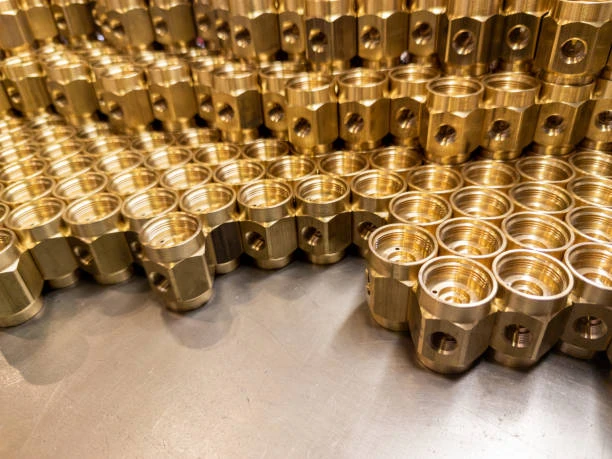As homeowners and garden enthusiasts seek efficient and durable solutions for their watering needs, brass hoses and fittings have become a popular choice. Known for their strength and longevity, these materials raise an important question: Is it safe to drink water from a brass hose and fittings? This article will delve into the safety concerns associated with brass components, the potential health risks, and recommendations for safe use.
Understanding Brass Hose and Fittings
Brass is an alloy primarily composed of copper and zinc. It has several appealing properties that make it ideal for various plumbing and gardening applications:
- Durability: Brass is resistant to corrosion, making it suitable for outdoor use where exposure to elements is common.
- Strength: Brass fittings can withstand high pressure, ensuring a reliable connection between hoses and fixtures.
- Malleability: This metal can be easily shaped and formed, allowing for a wide variety of fittings and connectors.
Common Uses of Brass Hose and Fittings
Brass hoses and fittings are commonly used in:
- Garden Hoses: Connecting hoses to water sources for irrigation and watering plants.
- Pressure Washers: Connecting hoses to machines for cleaning.
- Industrial Applications: Utilized in various industrial settings where durable connections are needed.
Health Concerns with Brass Fittings
While brass fittings have many advantages, there are health concerns related to the presence of lead in some brass alloys. Lead is a toxic metal that can leach into drinking water and pose health risks, particularly with prolonged exposure.
1. Lead Content in Brass
Not all brass fittings are created equal. Historically, many brass alloys contained lead to improve machinability and durability. The permissible lead content in drinking water fixtures has been regulated, but older products may still contain higher levels.
2. Potential Health Risks
Lead exposure can lead to several health issues, including:
- Neurological Damage: Especially harmful to children and pregnant women, even low levels of lead can impact brain development and function.
- Kidney Damage: Prolonged exposure can lead to kidney dysfunction.
- High Blood Pressure: Lead exposure is associated with an increased risk of hypertension.
Regulatory Standards
In the United States, the Safe Drinking Water Act (SDWA) regulates the allowable levels of lead in plumbing materials. The U.S. Environmental Protection Agency (EPA) has established standards that aim to minimize lead exposure in drinking water.
Recent Changes
As of 2014, the “Reduction of Lead in Drinking Water Act” mandates that plumbing fixtures and fittings have a weighted average of no more than 0.25% lead content for products intended for use in drinking water. This regulation aims to protect consumers from the harmful effects of lead leaching.

Assessing the Safety of Drinking Water from Brass Hoses and Fittings
So, is it safe to drink water from brass hoses and fittings? The answer largely depends on the specific product, its lead content, and how it has been us.
1. Check the Specifications
Before using a brass hose or fitting for drinking water, check the product specifications for lead content. Look for products labeled as “lead-free” or compliant with NSF/ANSI 61, a standard that certifies the safety of plumbing materials in contact with drinking water.
2. Consider the Age of the Fittings
Older brass fittings may contain higher levels of lead. If you have an older home or garden setup with brass components, consider replacing them with newer, certified lead-free options.
3. Usage and Maintenance
If brass hoses are us exclusively for watering plants or other non-potable purposes, the risk of lead contamination is minimal. However, if water from these hoses is consumed, ensure they are us correctly and maintained regularly. Regularly flushing the hose and fittings before use can also help reduce any contaminants.
Recommendations for Safe Use
To ensure the safe use of brass hoses and fittings for drinking water, consider the following recommendations:
1. Choose Lead-Free Options
Opt for brass hoses and fittings labeled as “lead-free.” These products are designed to meet the stringent standards for drinking water safety.
2. Regular Testing
If you are concerned about lead levels in your water, consider having your water tested. Many local health departments offer water testing services, and testing kits are available for home use.
3. Flush Before Use
If water has been sitting in the hose for an extended period, flush it out before drinking. This helps remove any potential contaminants that may have leached into the water.
4. Consult Professionals
If you’re unsure about the safety of your brass fittings or hoses, consult a plumbing professional. They can provide guidance on materials and safe usage.
Conclusion
Brass hoses and fittings can be a practical choice for various applications, but caution is warranted when it comes to drinking water. While many modern brass products meet safety standards and are labeled as lead-free, older fittings may pose health risks due to lead contamination. By staying informed about the materials used in your plumbing and gardening setups, you can make safer choices for you and your family. Always prioritize products that comply with regulatory standards to ensure the safety and quality of your drinking water.
FAQs
1. Are all brass fittings safe for drinking water?
Not all brass fittings are safe; some may contain lead. Always check for lead-free certification and compliance with safety standards.
2. How can I tell if my brass fittings contain lead?
Check the product specifications or labels. Look for “lead-free” or certifications such as NSF/ANSI 61.
3. Is it safe to use brass hoses for watering plants?
Yes, using brass hoses for watering plants is generally safe. However, if you plan to drink from them, ensure they meet safety standards.
4. What should I do if I suspect lead in my drinking water?
Consider having your water tested. You can contact your local health department or purchase a home testing kit.
5. How can I reduce potential contaminants in brass hoses?
Flush the hose before use, especially if water has been sitting for a long time. Regular maintenance can also help reduce contaminants.

















